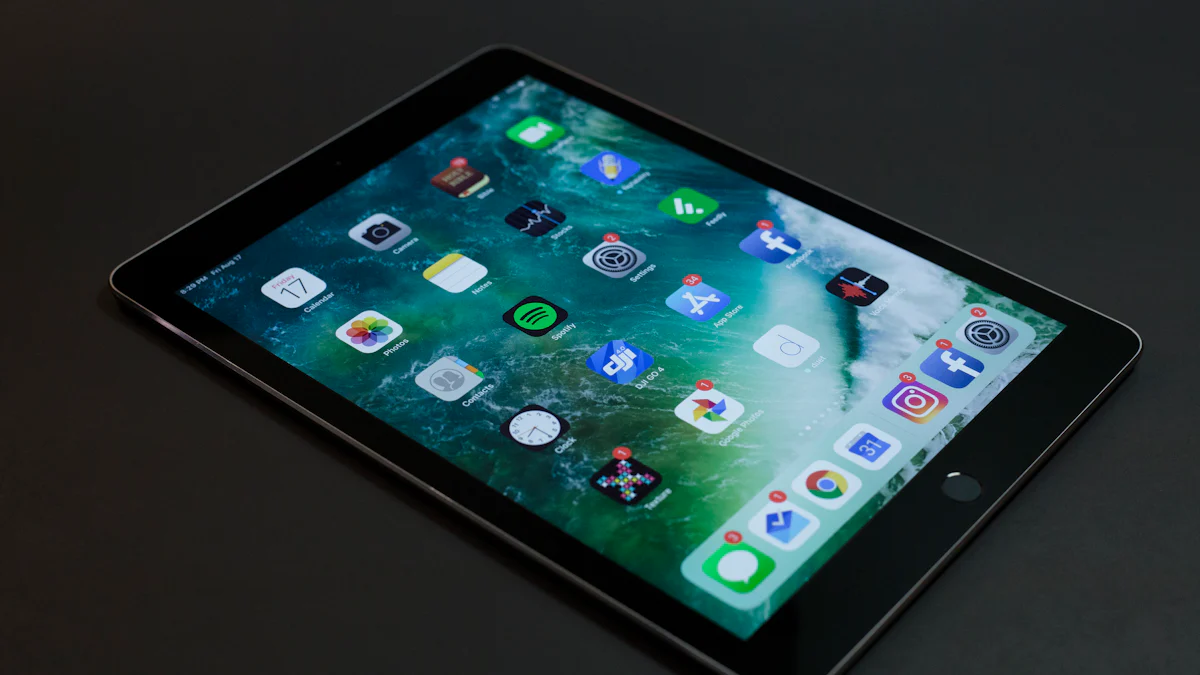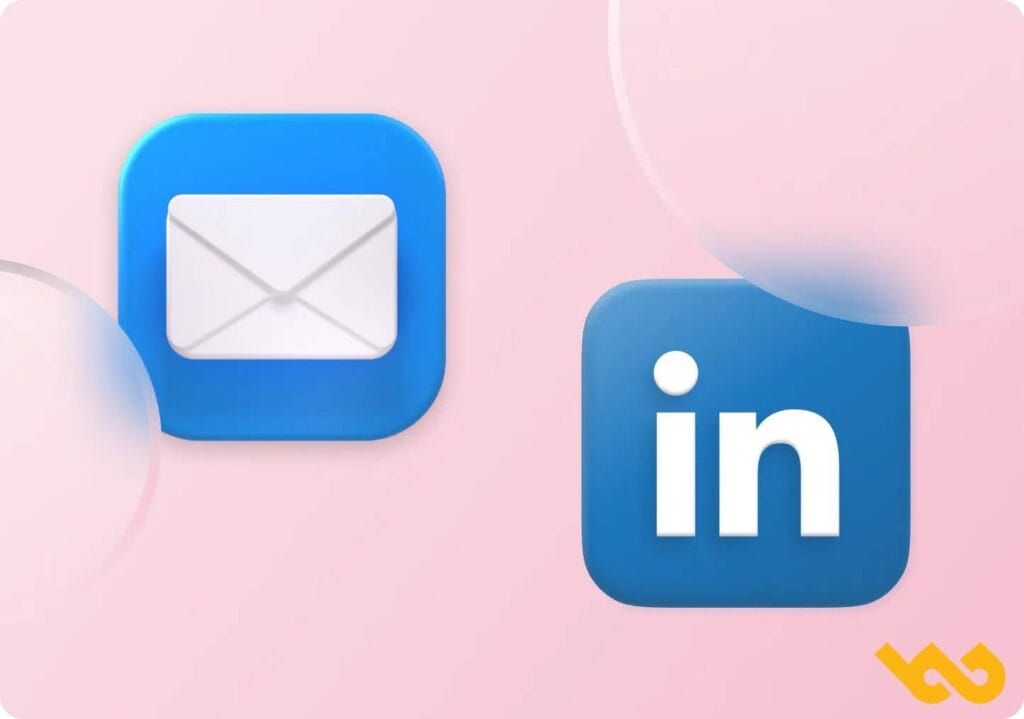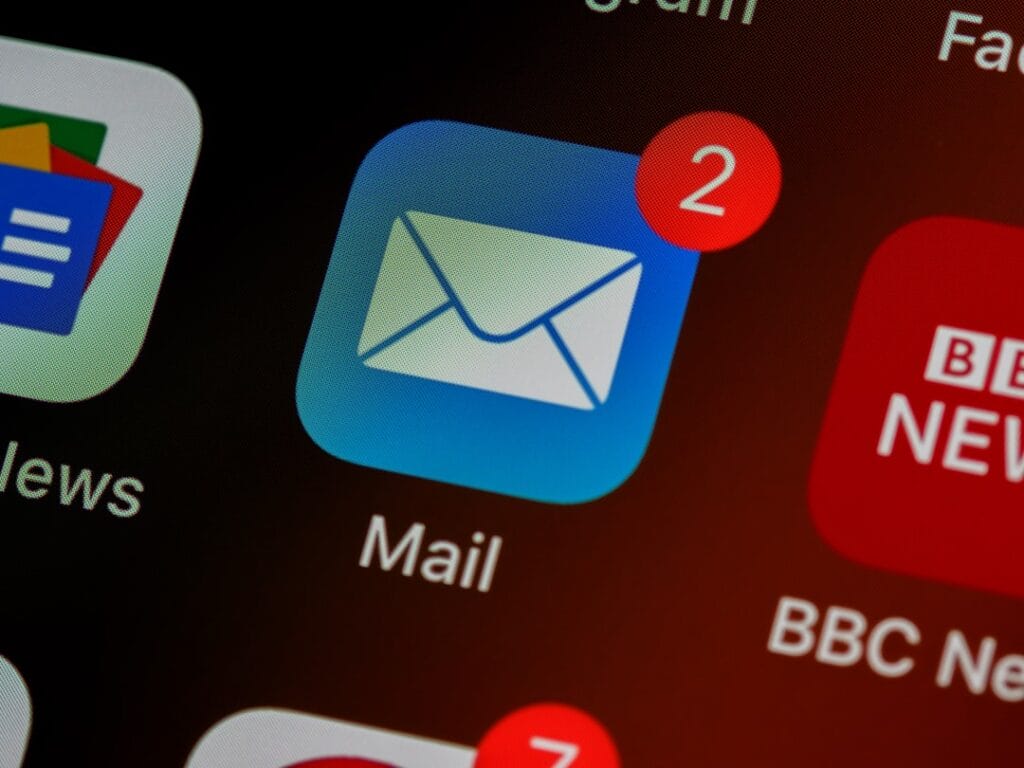In the professional world, choosing the right communication tool is crucial. You've probably heard of email and LinkedIn. These two platforms play an essential role in the B2B-Email-Linkedin prospecting. Email offers universal accessibility, while Linkedin is distinguished by its extended professional network. With more than 700 million users , Linkedin is essential for professionals, especially in the B2B sector. On the other hand, email remains a direct and personalized way to reach your prospects . Understanding these differences will help you optimize your communication strategy.
Email advantages
Accessibility and Universality
Email remains an essential tool for B2B prospecting. You can reach almost anyone, anywhere. Email does not depend on specific platforms, which makes it universal. You have the opportunity to contact prospects without the constraints of social networks.
Customization and Flexibility
With email, you customize your messages according to the needs of each prospect. This personalization increases your chances of success. You can adapt the content, the tone and even the time to send. This flexibility allows you to create tailor -made campaigns
Cost and Effectiveness
Email is often more economical than other prospecting methods. You can send messages at scale without high costs. Additionally, email offers measurable effectiveness. You easily track open and click-through rates, which helps you adjust your strategies.
Email disadvantages
Risks of Spam and Filtering
One of the main challenges of email is the risk of being perceived as spam. If your messages are not well targeted, they can end up in unwanted files. You must therefore be vigilant and take care of your contact list .
Lack of Interactivity
Email sometimes lacks interactivity. Exchanges can seem impersonal. Unlike LinkedIn, where the interaction is more direct, email often requires multiple exchanges to establish a solid connection.
Benefits of LinkedIn
Professional Networking
LinkedIn allows you to connect directly with decision-makers. You expand your professional network in just a few clicks. This platform offers a unique networking opportunity. You can build valuable relationships that can lead to business opportunities. Unlike email, LinkedIn makes it easier to access detailed professional profiles. This gives you valuable information about your prospects.
Visibility and Credibility
On LinkedIn, your professional profile strengthens your credibility. You share relevant content and interact with other publications. This increases your visibility in your sector. The recommendations and endorses of your connections add a layer of confidence. You position yourself as an expert in your field. This increased visibility can attract new prospects and partners.
Interactivity and Engagement
LinkedIn promotes direct and engaging interaction. You can comment, like and share posts. These actions create a dynamic dialogue with your prospects. LinkedIn messages, delivered directly to the inbox, reduce deliverability issues. You benefit from a higher response rate compared to traditional emails. This interactivity improves your chances of conversion.
Disadvantages of LinkedIn
Range Limitations
LinkedIn presents certain limitations in terms of scope. You often have to cultivate connections to reach a wider audience. Linkedin inmail offers a direct line to users outside your network. However, these alternatives can sometimes give better results at a lower cost. You must therefore assess if LinkedIn is the best choice for your prospecting strategy.
Cost and Complexity
Using LinkedIn can be expensive. Advanced features, like InMails, require a paid subscription. You also need to invest time in cultivating and maintaining your connections. The complexity of the platform can be a challenge for some users. So you need to weigh the costs and benefits before making a full commitment.
READ ALSO: Automating LinkedIn Email Scraping with Magileads
Direct Comparison

Effectiveness and Scope
Comparison of open and response rates
As part of the B2B-Email-LinkedIn prospecting, it is essential to compare the efficiency of LinkedIn emails and inmail. Linkedin inmail is distinguished by an average response rate of 10 to 25 % , which is higher than that of traditional emails. This efficiency is explained by the targeted and direct nature of the inmats, which directly reach the user reception box. On the other hand, emails can often be filtered as spam, thus reducing their opening rate.
Message reach
Email offers a broader reach because it is not limited by logins on a specific platform. You can send messages to large numbers of prospects without the constraints of social media. However, LinkedIn allows for a more targeted approach. InMails, although limited to LinkedIn users, guarantee better deliverability and more direct interaction with decision-makers.
Cost and Accessibility
Analysis of associated costs
Email is generally more economical because it does not require a paid subscription. You can send messages at scale without high costs. On the other hand, LinkedIn InMails require a premium subscription, which can be a significant investment. However, this investment can be justified by the higher response rate and the quality of interactions.
Accessibility for different audiences
Email is accessible to everyone, regardless of their presence on a specific platform. You can reach prospects around the world without restrictions. LinkedIn, for its part, is more suitable for professionals active on the platform. You need to evaluate whether your target audience uses LinkedIn to determine the best prospecting strategy.
Interactivity and Engagement
Level of interaction possible
LinkedIn promotes more dynamic interaction. You can comment, like and share posts, creating an engaging dialogue with your prospects. InMails allow direct and personalized communication, increasing the chances of conversion. Email, although customizable, sometimes lacks this immediate interactivity.
Recipient engagement
LinkedIn messages, delivered directly to the inbox, benefit from a higher response rate. This platform encourages engagement through regular and visible interactions. In contrast, email often requires multiple exchanges to establish a solid connection. You must therefore choose the channel that maximizes the engagement of your recipients.
Recommendations
↗️ Discover in video how Magileads can take your agency to the next level.
When to Use Email
Ideal scenarios for email
Email is particularly effective in several situations. You should use it when you want to reach a large audience without being limited by a specific platform. Email is ideal for mass campaigns, where large-scale personalization is possible. It is also suitable for formal communications, such as business proposals or follow-ups after a meeting.
Tips for Maximizing Efficiency
To get the most out of email, personalize your messages. Adapt the content to each recipient to increase your chances of success. Use automation tools to manage your campaigns efficiently. Make sure your emails are not perceived as spam by taking care of your contact list and following good deliverability practices.
When to Use LinkedIn
Ideal scenarios for LinkedIn
LinkedIn excels in situations where professional networking is crucial. Use this platform to make direct connections with decision-makers. LinkedIn is perfect for sharing relevant content and engaging with publications in your industry. You should use it when you want to boost your credibility and professional visibility.
Tips to Maximize Engagement
To maximize engagement on LinkedIn, be active. Share relevant content regularly and engage with posts in your network. Use InMails for targeted and personalized communications. Cultivate your connections by interacting authentically and participating in insightful discussions.
Combination of the Two
Strategies for combined use
Linkedin emails and messages complement each other perfectly . Use email for mass communications and LinkedIn for more targeted interactions. For example, you can send an email to introduce your business, then use LinkedIn to establish a personal connection. This integrated approach allows you to maximize your scope and commitment.
Benefits of an integrated approach
A combined approach offers many advantages. You benefit from the broad reach of email and the interactivity of LinkedIn. This strategy allows you to reach a diverse audience while maintaining personalized interactions. By combining these two tools, you optimize your prospecting strategy and increase your chances of success.
In this blog, you explored the pros and cons of email and LinkedIn for B2B prospecting. Email offers broad reach and flexible personalization, while LinkedIn stands out for its interactivity and professional networking. Choosing the right tool depends on the context and your specific goals.
Cold LinkedIn messages and inmail tend to have a better response rate than emails.
Don’t hesitate to experiment and adapt your strategies to maximize your effectiveness. By combining these tools, you can optimize your approach and increase your chances of success.
—————————
Magileads is prospecting automation software that allows you to easily manage all the complex aspects of your marketing processes.
Test Magileads for free in 14 days. Click here .
Or book a demo to see how it works. Click here.





